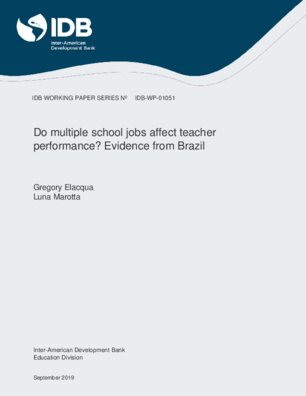Do Multiple School Jobs Affect Teacher Performance?: Evidence from Brazil
Date
Sep 2019
Low salaries, a limited amount of full-time teaching positions, and alternative systems of allocating teaching hours lead teachers to look for additional jobs in other schools. Although this is a more common phenomenon of teacher labor markets in developing countries, teachers who teach specific subject areas are in general more likely to hold positions in more than one school. Yet, little is known about the impact of multiple school jobs on teachers’ productivity. This paper sheds some light on this issue by examining whether students’ outcomes are affected when their teachers work in more than one school. We use longitudinal data of students and teachers from the municipality of Rio de Janeiro, Brazil, over a period of 7 years and exploit within teacher-school-grade variation in the number of school jobs over time. We found consistent patterns suggesting that an increase in the number of school jobs lead to a decrease in student test scores. The negative effect of multiple school jobs ranges from 0.03 to 0.06 standard deviations. The effects are much larger for female teachers, ranging from 0.05 to 0.11 standard deviations. Low income students are also more negatively affected when their teachers teach in more than one school at a time. Lastly, results suggest that an increase in the number of non-teaching hours, which include time for lesson preparation, is a more important mechanism for explaining the effect of multiple school jobs than an increase in the amount of teaching hours spent inside the classroom.




